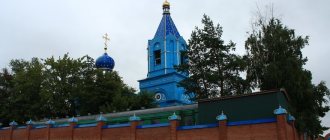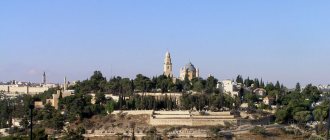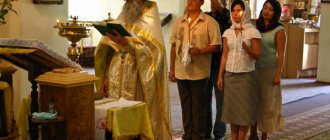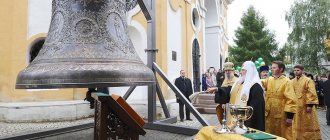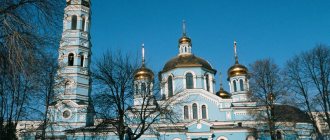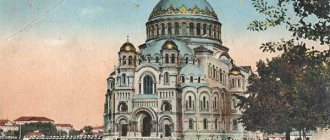- Nails from the Life-Giving Cross
- Crown of Thorns
- Spear of Longinus
- Shroud of Turin
- Sir
- Veronica Plat
- The Savior Not Made by Hands, or Mandylion
- The Robe of Jesus Christ, or the Robe of the Lord
- Holy Grail
- Foreskin of Jesus Christ
Relics associated with the earthly life of the Savior are the greatest value for believers. Majestic cathedrals were erected to store rarities, pilgrims come to them with prayers, and legends about miracles performed are passed on from mouth to mouth. Our article will tell you about these shrines!
Nails from the Life-Giving Cross
It is not known exactly how many nails were used in the crucifixion. There are only three of them on traditional icons. However, the skeleton of a man who died from such an execution, found by archaeologists, was pierced with four points. At the same time, the legs were nailed to the crossbar from the sides, as if clasping it.
These Instruments of the Passion of Christ were found by Empress Helena next to the True Cross. Unfortunately, the shrines turned out to be very easy to fake, which is what the scammers took advantage of. In particular, the French theologian John Calvin reports 14 such relics kept in churches in Milan, Rome, Venice, Paris and Cologne. In addition, some nails were reforged into other religious objects - for example, the Byzantine ruler Constantine made a helmet and bridle for his horse from them, and another rarity was inserted into the Iron Crown of Lombardy.
Iron Crown of the Lombard Kingdom
Stone of Ibrahim (Mecca, Saudi Arabia)
When the prophet Ibrahim, by order of Allah, was rebuilding the Kaaba after the flood, and its walls rose higher than his height, so that he could no longer reach them, his son Ismail, who was helping him, rolled a stone. Ibrahim stood on it and completed the construction of the structure. It is believed that during construction a miracle happened: the stone became soft, and foot prints remained on it. The stone is revered by Muslims: next to it, imams lead the prayers of the faithful, several million of whom come to Mecca every year. By the way, the holiday of Kurban Bayram (Il al-Adha), which coincides with the pilgrimage to Mecca, is also associated with the name of Ibrahim and his son Ismail. Ibrahim was about to sacrifice his son, but at the decisive moment he was replaced by a lamb. In the Christian and Jewish traditions, this is the story of Abraham and Isaac.
Another Muslim shrine is built into the eastern corner of the Kaaba - the Black Stone, or the Stone of Forgiveness. According to legend, he was sent to Adam after his repentance. Adam founded the Kaaba, and the prophet Ibrahim built a stone into the wall. It is believed that the stone was originally white, but gradually turned black, saturated with the sins of mankind.
Crown of Thorns
These are branches of white thorns woven into a ring, placed on the head of the Lord during His desecration by Roman soldiers. The diameter of the shrine is 21 cm. At the end of the 19th century. it was sealed in a glass flask.
Until 1204, the Crown was located in Constantinople, in the Church of the Virgin Mary. This was reported by the Ephesian Metropolitan Nicholas Messarit. But after the city was attacked by the Crusaders, the relic came to the Latin Emperor Baldwin II. Due to financial difficulties, he pawned the shrine to the Venetians, from whom King Louis IX bought it, paying 135 thousand gold livres.
Crown of thorns in Notre Dame de Paris Cathedral
Relics in Orthodoxy
The Orthodox Church previously focused on the worship of icons rather than relics. Later, the pilgrimage of Orthodox believers to various countries of the world began to develop to worship shrines, the custodians of which are now representatives of other Christian churches. As a rule, Orthodox pilgrims are given permission for this and kind assistance is provided. In an effort to create the image of the “Second Jerusalem” and the “Third Rome,” Orthodox sovereigns and patriarchs collected Christian shrines , which are available to believers in most churches of the Orthodox Church. In Russia, most of the relics are in the Kremlin museums - the Armory Chamber, the Assumption Cathedral. Among the main shrines are particles of the Robe of Christ, a Nail from the Holy Cross, and particles of the Robe of the Mother of God. A unique relic is the ark of Dionysius of Suzdal with a particle of the tree of the Life-giving Cross of the Lord and 16 other shrines, among which are particles of Christ’s tunic, the crown of thorns, and the aromas with which the Savior’s body was anointed before burial.
Spear of Longinus
According to the Gospel of John, this is the name of the lance that the legionnaire thrust into the hypochondrium of the crucified Creator. Legends say that the relic was owned by the emperors Constantine the Great and Justinian, the king of the Goths Theodoric, the savior of Europe from the Arabs Charles Martell and Frederick Barbarossa.
Several similar relics are kept in churches. In particular, this is a spear from the Vatican, a Viennese spear (also known as the “Spear of Destiny”; it was what Hitler was hunting for) and a shrine from the Armenian monastery of Etchmiadzin.
Vienna spear, spear from the Vatican (photo does not exist), spear in Etchmiadzin. Armenia
Shroud of Turin
The relic is a four-meter linen cloth with numerous dark spots. These are traces of the blood and sweat of Jesus Christ, left after Joseph of Arimathea covered the body of the Messiah with a burial shroud. And if you look at the negatives of photographs of the Shroud, you can see that the prints form a human silhouette! Folded arms, body, legs and even facial features are visible. Currently the shrine is kept in the Cathedral of St. John the Baptist (Turin, Italy).
However, the church does not recognize this object as sacred, since its reliable history begins only in 1353. There are assumptions that the image was created by the medieval Italian painter Giotto di Bondone. And carbon dating showed that the fabric of the Shroud was woven between 1275 and 1381.
Cathedral of Saint John the Baptist in Turin
Beard of the Prophet Muhammad (Istanbul, Türkiye)
According to legend, after the death of the Prophet Muhammad, his beard was shaved and preserved by one of the barbers close to him. It is believed that this particular beard is on display today in the Topkapi Palace in Istanbul. Unlike many sacred places for Muslims, not only those professing Islam can get there. The palace itself also deserves attention. It was built at the end of the 15th century. and for five centuries served as the main residence of the Turkish sultans. This is a huge complex consisting of many office and residential premises, with a rich collection of porcelain. In addition to the beard of the Prophet Muhammad, Christian relics are also kept here: a particle of the relics of John the Baptist, the staff of Moses and the sword of the Prophet David.
Several hairs from Muhammad's beard ended up in the Hazratbal Mosque in Srinagar, India, and in the Tyumen Regional Museum. The relic came to Russia in the 19th century. thanks to the Tyumen merchant and philanthropist Nigmatulla-Haji Karmyshkov-Seidukov. At first it was kept in the mosque, and after the revolution of 1917 it was transferred to the museum
Sir
This shrine, also known as ubrus and head heavy, is a piece of linen fabric measuring 84*53 cm. The material is covered with blood stains and ichor, because, as the Gospel says, it was used to cover the face of God’s son when he was taken down from the cross. The name of the relic comes from Lat. "sudarium" - "handkerchief for wiping sweat."
The history of the rarity is described at the beginning of the 12th century. Bishop Pelagius. According to it, the sir was taken from Jerusalem in 614. From Alexandria the scarf came to Oviedo (Spain). To store the relic, the Camara Santa Chapel was built, and then the Cathedral of San Salvador. There is another similar shrine in Bruges (Belgium), where it ended up after the Second Crusade.
An oak casket, upholstered with silver plates with a chased pattern, in which the Sudar is kept. Oviedo, Spain
Veronica Plat
This image of the Savior appeared on the scarf of the pious virgin Veronica, which she handed to the Messiah going to Golgotha. The distinctive features of the shrine are the distorted features of Jesus Christ and the crown of thorns on His head.
A similar episode is not mentioned in the Gospels, but the legend of the miraculous Plath is still very popular. There are several copies of the relic, the main one of which is in the Cathedral of St. Petra (Vatican, Rome). Other similar rarities are the Veil from Manopello and the Holy Face from Alicante.
Veronica's Plaque is kept in St. Peter's Basilica in Rome
Christian shrines associated with the life of the Blessed Virgin Mary
Robe of the Virgin Mary
The Robe of the Virgin Mary is the robe of the Blessed Virgin Mary, which according to legend was stolen by Byzantine aristocrats from an elderly Jewish woman in Nazareth in the 5th century. It is believed that the robe was in the Blachernae Church for a long time, but after a fire in the church in 1434, the trace of the robe was lost.
Today it is known that the robe or its particles are found in different places: in Russia in the Ark of Dionysius, in the Lateran Basilica of Rome, the Blachernae Church in Zugdidi and a number of other places.
Belt of the Virgin
The Virgin Mary's girdle is not mentioned in any source until the 9th century. In the 20th century, 2 stories about the belt became known: according to the first legend, the belt was kept in the city of Zila, and then in Constantinople, and according to the second legend, the belt was kept in Jerusalem, and then in Constantinople. After the fall of Constantinople, several locations of the relic are known.
The Honest Belt, which touched the Most Pure Womb of the Virgin Mary, which bore the Creator, and moistened with drops of milk that nourished the One who is the Life of the world, is for all Christians evidence of salvation and faith in Christ.
The Savior Not Made by Hands, or Mandylion
The Savior Not Made by Hands is an analogue of the Plata of Veronica, which exists in the Orthodox tradition. As legend says, it was created by the Son of God himself in response to the request of the pagan king Abgar. He suffered from leprosy and sent messengers to the Savior, begging Him for healing. The Messiah had mercy on the ruler and, having washed himself, wiped his face with an ubrus (towel), on which the imprint of the holy face appeared.
The fabric with the miraculous image was kept in Edessa for a long time, until in 944 it was bought by the Byzantine emperor Romanos I Lekapin. But when Constantinople was sacked by the crusaders in 1204, the relic was lost. The closest copies to the original are considered to be the Mandylion from the Temple of San Silvestro in Capite (Vatican) and the image from the Armenian Church of St. Bartholomew in Genoa.
Mandylion from the Temple of San Silvestro in Capite. Vatican
Buddha's Tooth (Dalada Maligawa Temple, Sri Lanka)
In the city of Kandy there is a repository of the sacred talisman and symbol of Buddhists - the tooth of Buddha. It is believed that he bestows wisdom, courage and the fulfillment of all desires. The relic is so important and sacred that almost all the time it is locked away in seven caskets nested inside each other. Only a select few, such as members of the royal family, have the opportunity to glimpse great value once every few years. Despite this, it’s worth coming here: Buddhists believe that the tooth “works” even at a distance. The Dalada Maligawa temple itself is also interesting. Its interior decoration is striking in luxury.
In honor of the sacred tooth, the Esala Perahera festival has been held for several hundred years, lasting 14 days. The main event is a procession of elephants in magnificent decoration, accompanied by music, dancing and torchbearers. This is the only day of the year when the Buddha's tooth box is taken out of the temple.
The Robe of Jesus Christ, or the Robe of the Lord
This tunic was given by lot to one of the soldiers who crucified Jesus. According to legend, he was a Georgian, and brought the relic to Iveria, where it was kept in the treasury of the Mtskheta Patriarchal Church of Svetitskhoveli.
The Trier Cathedral in Germany is the owner of an ancient relic of the Christian people - the Robe of the Lord. According to legend, the Virgin Mary herself wove it for her son, who wore it throughout his entire earthly existence.
Chiton of Jesus Christ The main relic of the Trier Cathedral. Germany
Holy Grail
Just like the Shroud of Turin, this rarity is not recognized by the church. However, this does not prevent people from worshiping him - for example, one of the relics is on display in the Cathedral Church of Valencia. According to research, the glass vessel is actually about 2 thousand years old, and the manner in which it is made is typical of the Middle East.
In addition, there are versions that the Cup in which Joseph of Arimathea collected the blood of the Savior is located in Turin (Italy) or Glastonbury (England).
Valencian Grail (Cathedral of Saint Mary of Valencia)
Valaam: monastery
The Valaam Monastery - the holy of holies of Orthodox pilgrims - is located in Karelia, on the islands of the Valaam archipelago. According to legend, during the time of Christian missionary work, the Apostle Andrew the First-Called moved to the North, preaching the Gospel. Having passed the Dnieper and Volkhov rivers, he reached the Valaam Mountains, where he erected a stone cross (now the Resurrection Monastery is located on this site). 900 years later, the monks Sergius and Herman founded a monastic brotherhood on one of the islands. Judging by the surviving written sources, the reliable history of the Valaam Monastery begins in the 14th century.
Under Peter the Great, the wooden Transfiguration Cathedral and cell buildings were built. In 1774, the Church of the Transfiguration of the Lord was consecrated, at the corners of which the Assumption and St. Nicholas churches were erected. Later, a gate church was built in the name of the Holy Apostles Peter and Paul. A 38-meter monastery bell tower rises above the island, the largest bell of which, named in honor of St. Andrew the First-Called, weighs 1000 pounds.
Foreskin of Jesus Christ
Anatomically, the shrine is a prepuce (part of the skin of the penis), which was removed during circumcision, a procedure to which all Jewish male infants were subjected on the 8th day after birth.
The rarity was repeatedly forged - more than 18 prepuce are known, which are kept in Sanyago de Compostella (Spain), Antwerp (Belgium), Chartres (France), Calcata (Italy) and other cities.
In 800, King Charles presented Pope Leo II with the relic of the Sacred Prepuce.
